Answers to The Oceans End of Unit Test - Benjamin-Mills
Answers to The Oceans End of Unit Test - Benjamin-Mills
Answers to The Oceans End of Unit Test - Benjamin-Mills
Create successful ePaper yourself
Turn your PDF publications into a flip-book with our unique Google optimized e-Paper software.
O<br />
END OF UNIT TEST<br />
<strong>Answers</strong> <strong>to</strong> <strong>The</strong> <strong>Oceans</strong> <strong>End</strong> <strong>of</strong> <strong>Unit</strong> <strong>Test</strong><br />
Q Answer with marks Marking suggestions<br />
1(a)<br />
1(b)<br />
1(c) (i)<br />
CO 2<br />
is a gas (1); which has more entropy as there are more ways <strong>of</strong><br />
arranging its molecules (1)<br />
DS! sys<br />
= 214 + 38 – 93 (1); = +159 J K –1 mol –1 (1), including<br />
sign and units<br />
–180 ¥ 1000/300 (1); = –600 J K –1 mol –1 (1), including sign<br />
and units<br />
1(c) (ii) –150 (1) (J K –1 mol –1 )<br />
1(d) DS! <strong>to</strong>t<br />
= DS! sys<br />
+ DS! surr<br />
This is negative at 300 K and positive at 1200 K (1);<br />
Positive values means reactions are possible (1)<br />
1(e) (i)<br />
Ca(s) + O 2<br />
(g)<br />
CaO(s)<br />
Or alternative cycle drawn as an<br />
enthalpy level diagram<br />
DH 1<br />
DH 4<br />
DH 2<br />
DH 3<br />
Ca(g) + O(g)<br />
Ca 2+ (g) + O 2– (g)<br />
Top line correct, labelled DH or enthalpy change <strong>of</strong> formation (1);<br />
Rest <strong>of</strong> cycle correct, arrows labelled DH or some attempt <strong>to</strong> assign<br />
specific enthalpy changes (1)<br />
1(e) (ii) Lattice enthalpy = DH 4<br />
= DH 1<br />
– DH 2<br />
–DH 3<br />
(1) <strong>Unit</strong>s not essential for mark<br />
= –635 – (178 + 249) – (596 + 1152 – 147 + 753)<br />
= –3416 kJ mol –1 (1)<br />
1(f) (i)<br />
1(f) (ii)<br />
At the bot<strong>to</strong>m <strong>of</strong> the lake the pressure is higher (1); this means the<br />
equilibrium will move <strong>to</strong> the left, increasing the concentration <strong>of</strong><br />
CO 2<br />
(aq) (1)<br />
Deep oceans can absorb a lot <strong>of</strong> CO 2<br />
(1); this acts as a ‘sink’ for<br />
the extra CO 2<br />
we are producing (1)<br />
Q Answer with marks Marking suggestions<br />
2(a)<br />
2(b)<br />
Ammonia has only (an average) <strong>of</strong> one hydrogen bond per molecule<br />
(1); water has two (1); greater intermolecular forces mean higher<br />
boiling point (1)<br />
Ammonia would be less efficient (1); as it has a lower specific heating<br />
capacity than water (1); thus less energy would be transferred per<br />
mole/gram <strong>of</strong> ammonia (1)<br />
Q Answer with marks Marking suggestions<br />
3(a) (i)<br />
3(a) (ii)<br />
It is an equilibrium (1); so the benzoic acid is not fully reacted/<br />
ionised (1)<br />
K a<br />
=<br />
[C 6<br />
H 5<br />
COO – ][H 3<br />
O + ]<br />
[C 6<br />
H 5<br />
COOH]<br />
(1) for products on nomina<strong>to</strong>r; reactants on denomina<strong>to</strong>r;<br />
(1) completely correct<br />
3(b) (i) –lg[H + ] / –lg[H 3<br />
O + ] (1)<br />
3(b) (ii) [H 3<br />
O + ] 2 = (1 ¥ 10 –4 ) ¥ 0.010 = 1 ¥ 10 –6 (1)<br />
[H 3<br />
O + ] = 1 ¥ 10 –3 mol dm –3 (1)<br />
pH = 3 (1)<br />
3(b) (iii) pH = 2 (1)<br />
3(b) (iv)<br />
HCl is fully ionised (1); (benzoic acid is partially ionised)<br />
hence the concentration <strong>of</strong> [H 3<br />
O + ] is lower (1)<br />
156<br />
A2 LEVEL
END OF UNIT TEST<br />
O<br />
3(c) (i)<br />
3(c) (ii)<br />
= K a<br />
/[H 3<br />
O + ] = 1 (1)<br />
= K a<br />
/[H 3<br />
O + ] = 10 –4 /10 –6 = 100 (1)<br />
3(d) Benzoic acid (1); since there is very little <strong>of</strong> this present at pH 6<br />
where preservation is poor (1)<br />
3(e)<br />
[C 6<br />
H 5<br />
COO – ]<br />
[C 6<br />
H 5<br />
COOH]<br />
[C 6<br />
H 5<br />
COO – ]<br />
[C 6<br />
H 5<br />
COOH]<br />
pH 4 (1); concentrations <strong>of</strong> benzoic acid and benzoate more equal<br />
there (1); buffering depends on large reservoirs <strong>of</strong> these (1)<br />
3(f) [OH – ] = 0.100, thus [H 3<br />
O + ] = 1 ¥ 10 –13 mol dm –3 (1);<br />
pH = 13 (1)<br />
Q Answer with marks Marking suggestions<br />
4(a) [Ba 2+ ] 2 = 1.0 ¥ 10 –10 (1);<br />
[Ba 2+ ] = 1.0 ¥ 10 –5 mol dm –3 (1);<br />
No, this is smaller than 1.0 ¥ 10 –3 (1)<br />
4(b) [Ba 2+ ] = 1.0 ¥ 10 –10 /1.0 ¥ 10 –2 (1); = 1.0 ¥ 10 –8 mol dm –3<br />
(1);Yes, it’s lower still! (1)<br />
4(c) (i)<br />
4(c) (ii)<br />
Water molecules cluster round/hydrate positive ions and negative ions<br />
(1); the energy released when they do this/the enthalpy changes <strong>of</strong><br />
hydration (1); roughly cancel the lattice enthalpy/the amount <strong>of</strong><br />
energy needed <strong>to</strong> break up the lattice (1)<br />
BaSO 4<br />
(s)<br />
Ba 2+ (aq) + SO 4 2– (aq)<br />
DH 1<br />
DH 2<br />
DH 3<br />
Ba 2+ (g) + SO 2– 4<br />
(g)<br />
Or alternative cycle drawn as an<br />
enthalpy level diagram, first two<br />
marks can be scored for a cycle<br />
showing enthalpy <strong>of</strong> solution as<br />
negative<br />
4(c) (iii)<br />
4(c) (iv)<br />
(1) basic shape<br />
(1) detail correct<br />
(1) for calculation:<br />
Enthalpy <strong>of</strong> solution = DH 2<br />
+ DH 3<br />
= – (–2374) + (–1360) + (–1087) <strong>Unit</strong>s not necessary for calculation<br />
= –73 kJ mol –1 mark<br />
Mg 2+ is smaller than Ba 2+ , thus more water molecules gather round<br />
it/it is more highly hydrated (1); thus more bonds form/more energy<br />
is released (1)<br />
DH! for MgSO 4<br />
more exothermic (1); indicates that it may be more<br />
soluble (1); needs data <strong>of</strong> entropy changes <strong>of</strong> the reactions involved (1)<br />
A2 LEVEL<br />
157


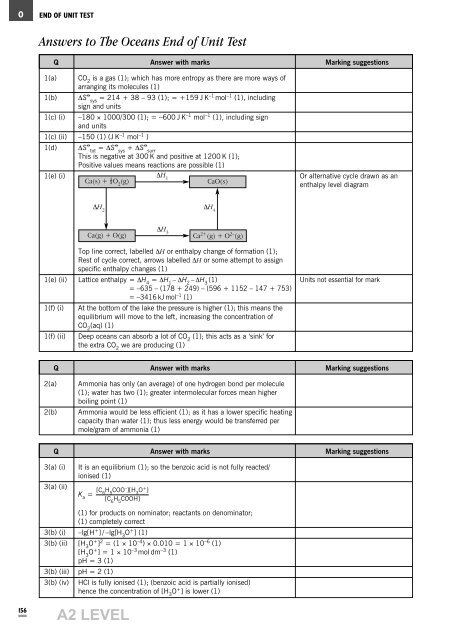
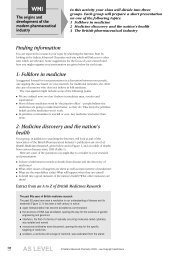
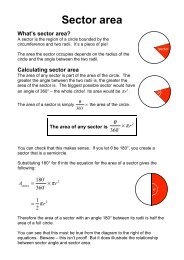
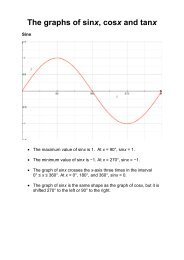
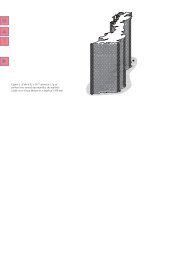

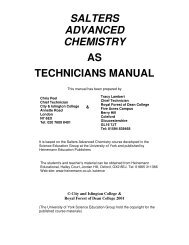



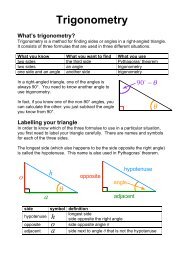
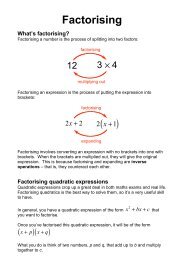
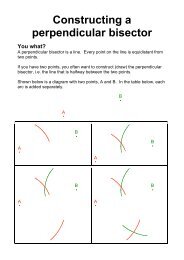

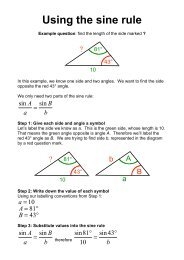
![ISI Web of Knowledge [v.4.10] - All Databases Results - Benjamin-Mills](https://img.yumpu.com/39253071/1/184x260/isi-web-of-knowledge-v410-all-databases-results-benjamin-mills.jpg?quality=85)